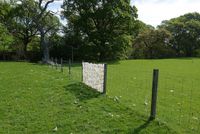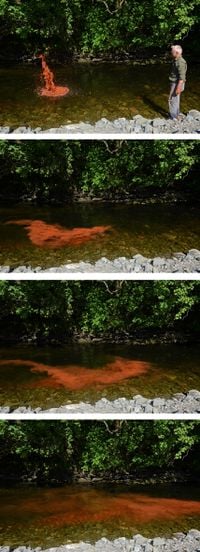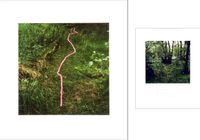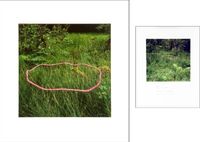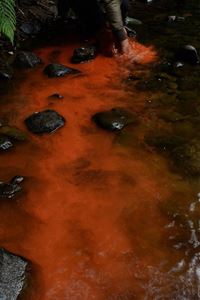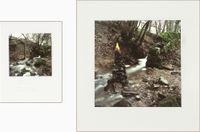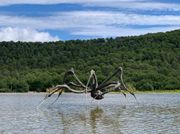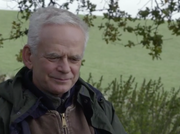Andy Goldsworthy is a British artist and environmentalist who is best known for creating site-specific works in natural settings. In 1974, Goldsworthy began studying fine art at the Bradford College of Art (West Yorkshire, England), and later received his Bachelor of Arts degree at Preston Polytechnic (Lancashire, England).
Read MoreGoldsworthy spent much of his youth as a labourer in the farming industry, which not only influenced his choice in materials, but also created the foundation of an environmental focus in his artistic practice. His sculptures are largely informed by the context in which he creates his work, using an array of natural and impermanent materials from the immediate environment such as wood, stones, leaves and twigs. The often fleeting quality of his work and their outdoor locations are also inspired from his rural background, where he witnessed an ever-changing landscape. Balanced ice column (1985), which was created in Cumbria, England, documents both a use of materials relevant to the site, as well as the transient nature of his sculptures by depicting slabs of ice intricately stacked in eight tiers.
Goldsworthy’s ephemeral sculptural works are usually created in isolation using his own hands; however, he also creates more permanent sculptures which sometimes involve the use of machinery and often the assistance of skilled tradespeople. Storm King Wall (1997–1998) at Storm King Art Centre in New York State—Goldsworthy’s first museum commission for a permanent work in the US—exemplifies his use of the traditional dry stone walls as a motif in his work, drawing on British agricultural tradition and connecting the present to the past. Inspired by a historic wall on the site, the work is a 2,278 foot-long dry stone wall which snakes its way through woods, eventually disappearing into a pond, from which it emerges on the other side before continuing uphill to Storm King’s western boundary. Under Goldsworthy’s supervision, the work was built by a team of British wallers who stacked a variety of specific stones to create the roughhewn structure.
Goldsworthy also uses photography as a medium, including as a means to document his sculptural works. As such, his practice demonstrates a dynamic relationship between the two mediums. Photography plays an integral part in giving his ephemeral works a sense of permanence, whilst equally recording deterioration. Photographs such as Sticks spire (1983) show stages of the works’ making and eventual deterioration. Goldsworthy will often photograph a sculptural work immediately after it is complete, and then return some time later to photograph it again.
Nina Lala | Ocula | 2017
